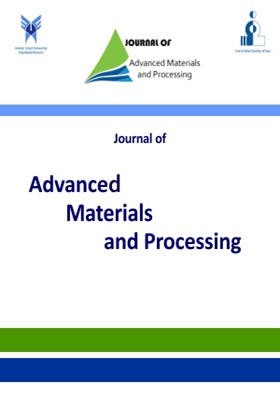Preparing and Investigation a New Nanofluid for Employing in Machining Process: Synthesis and Characterization of Graphene Oxide Nanoparticles
محورهای موضوعی : Mechanical engineering
1 - Young Researchers and Elite Club, Najafabad Branch, Islamic Azad University, Najafabad, Iran
کلید واژه: Bronze, graphene oxide, Machining process, Empirical Analysis, Nanoparticle synthesis,
چکیده مقاله :
The quality of machined workpieces, particularly precious metals, is the main goal of every machining process. A suitable cutting fluid can substantially affect the machining outcome. The present study is novel in that it uses nanofluids in the machining process to mitigate the adverse effects of high temperatures and fraction. Graphene oxide (GO) nanoparticles were synthesized using the modified Hummers method. FTIR, FESEM and XRD tests were used for GO characterization and also for atomic, surface and chemical analyses. The studied workpiece was a bronze shaft, ⌀20 mm. Different nanofluid solutions (0.25 and 0.5 vol%) were applied to reduce the machining loads and increase the workpiece flatness. The results were then compared with those from a base water-oil (90-10 vol%) cutting fluid (Behran, Iran). The NP characterization confirmed the satisfactory quality of the particles. It also showed that the effect of NP on the machining forces is substantial. Accordingly, the largest reduction in the mean machining force was achieved when using the 0.5% nanofluid solution (28.34% less than the base fluid). The surface roughness of the bronze shaft was lower when using the 0.5% nanofluid (0.57 μm) instead of the base fluid (0.668 μm). Finally, it can be concluded that this nanofluid can be an alternative to the base fluids in the machining process.


